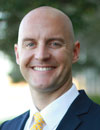
Putting Reserves in Perspective
By Will Simons, RS, EBP / Published August 2021

It’s getting to be that time of year when most community associations begin the annual process of planning and adopting next year’s financial budget. For associations small and large, whether condominium, HOA, or otherwise, this is arguably the most difficult and most important task that association boards and their managers will tackle in the course of doing business. There are estimates to be obtained, contracts to be negotiated, and tough decisions to be made regarding next year’s forecasts. The managers we work with routinely say that it’s the most stressful part of the year…and they’re the ones getting paid for it! For volunteer board members, it’s the time of year that makes you question why you ran for that position in the first place.
One of the obstacles many associations face is what to do about reserves. Unlike the other line items in an association’s annual budget, the amount to be budgeted for long-term repair and replacement of common area assets can be a little bit tricky. How do you know how much is enough? You’ve got income statements and balance sheets with plenty of good-sounding numbers, but is this the whole story?
Let’s try a simple exercise. An acquaintance tells you he’s the treasurer of his homeowners association, and he’s just been reviewing that month’s financial statements. His association has a million dollars in their reserve account, and as treasurer, he’s going to speak at their annual membership meeting to deliver the good news to the rest of the membership. He thinks they can probably cut next year’s reserve transfer in half. After all, they’ve got seven figures in the bank, right?
Again, you know nothing but what he’s told you. If the man was treasurer of a fairly new condominium building with one pool and a tennis court, you’d probably figure they’re in great shape. But what if he represents an aging 5,000-home community with miles of crumbling roads, dilapidated amenities, and a 10,000-square-foot clubhouse that needs a new roof and a paint job? How would that change things?
By now, you’re appreciating that dollar balances don’t tell the whole story. To truly know where an association stands financially, we’ve got to have something to compare against. When it comes to reserve funding, this means comparing your actual account balance to some kind of benchmark. National Reserve Study Standards define this benchmark as the “fully funded balance.” This amount is a calculated figure taken at a snapshot in time and is the result of analyzing the association’s current reserve obligations.
Let’s use a simple example to show how the fully funded balance (FFB) is calculated. Imagine you have an air conditioner that currently costs $5,000 to replace, and you believe it will have a life expectancy of ten years from the date it’s installed. Now, let’s say that the air conditioner was installed five years ago. How much money should you have saved up for when you’ll need to buy a new air conditioner? In this simple example, the answer should come quickly—$2,500, right? The air conditioner is halfway through its life expectancy, so you should have half of the replacement cost on hand. That’s it. Notice that I didn’t say that’s how much you ACTUALLY have, only that the $2,500 is the amount you SHOULD have on hand today. It’s a theoretical amount based on the age and current cost of the air conditioner.
Taking this process a step further, we are able to calculate in real terms how well-prepared you are to replace that air conditioner. We express this relative strength in terms of “percent-funded.” The concept is simple: let’s say that instead of the ideal $2,500, you only have $1,000 in the bank. The amount you SHOULD have is still $2,500, so in real terms you are only “40 percent funded” ($1,000 divided by $2,500). When an association is analyzing its reserve fund obligations, this is the kind of calculation that takes place but on a much larger scale. An association is often dealing with dozens of different types of projects, each with a unique life expectancy and replacement cost.
You might be wondering why percent funded is important. The reason is that an association’s relative reserve fund strength (aka its percent-funded figure) can be a reliable predictor of the likelihood of special assessments and bank loans. Based on an internal study comprising over 10,000 reserve studies, our firm calculated that associations funded above 70 percent had a less than five percent chance of ever needing a special assessment for reserves. By contrast, those associations funded less than 10 percent faced a special assessment more than half the time. Throughout the entire spectrum, we find that the higher an association’s percent funded, the less likely they are to run out of money. Notice that there’s no mention here of dollar balances. The only way to know whether a particular dollar balance is enough is by comparing it against a benchmark [FFB] and then deriving conclusions based on that comparison (percent funded).
Hopefully, you see that this is an important issue that needs to be addressed by every association. There are many important steps along the way, including determining what types of projects need to be included in your forecast, estimating accurate and reliable useful life and cost estimates, and properly projecting your actual reserve balance. Many associations choose to use a professional to help with this process, which ensures that the forecasting is done by a competent, independent professional with experience helping similar associations. Whether an association chooses to take on this process internally or looks outside for assistance, it’s one of the most important aspects of successfully preparing for the future. For those that choose to budget without reserves, or don’t take the time to prop-erly identify where they stand financially, I’ll borrow a line from Lewis Carroll: “If you don’t know where you’re going, any road will get you there.”
Will Simons, RS, EBP
President, Association Reserves
Will Simons, RS, EBP, is a credentialed reserve specialist and president of the Florida regional office of Association Reserves, a national provider of reserve study services. For more information, visit www.ReserveStudy.com, call (954) 210-7925, or email wsimons@reservestudy.com.




